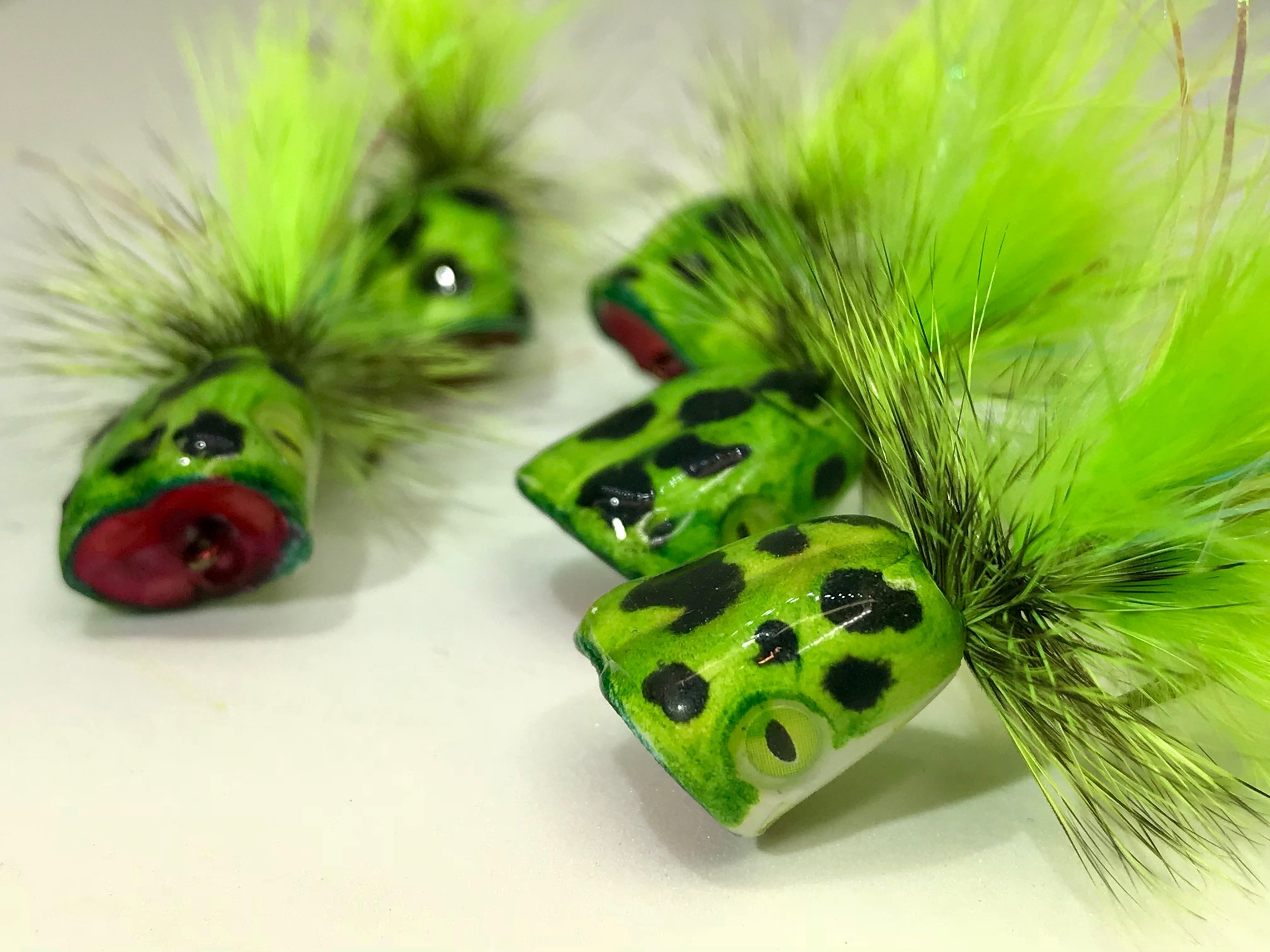Largemouth Bass

Habitat
The largemouth bass is widely distributed, they can be found all throughout the United States and southern Canada
as well as Mexico and a host of other countries throughout the world. Originally it was native to North America. They can be found in ponds, lakes, and reservoirs as well as slower moving streams and rivers. The largemouth bass is an ambush predator and prefer to remain near cover like weed beds, fallen or sunken trees, docks, large rocks, etc. In certain conditions, they will hunt in open water when schooling fish like gizzard shad are present.

Description
Largemouth Bass are a black bass that is part of the sunfish family. Like most members of the sunfish family, they are a fish of many names including widemouth bass, bigmouth bass, black bass, bucket mouth, largies, Potter's fish, Florida bass, Florida largemouth, green bass, green trout, Gilsdorf bass, Oswego bass, southern largemouth and northern largemouth.
A largemouth bass is olive green in color and in some northern locations their color takes on a grayish tint. The sides of the fish are marked by a series of black blotches that form an irregular horizontal line that runs the length of the fish. The upper jaw extends past the eye of the fish, unlike its small mouthed cousin whose upper jaw stops at the midpoint of the eye. A largemouth bass can live 16 years on average and can reach almost 30” in length and weigh up to 25 pounds.

Feeding Habits
The largemouth bass is a voracious eater. If it can fit into their cavernous mouth, they will attempt to eat it. Their diet includes insects, fish of all types, crayfish, frogs, snakes, turtles, salamanders, baby alligators even bats, water birds and small mammals. They can eat prey up to 50% of their body size!

Spawning
Spawning takes place in the shallows near shore, in water 1 to 6 feet deep. Reproduction begins when the water temperature in the spring reaches and holds above 60 degrees. Males create the nests by removing debris from the bottom. Nests are typically made over firm bottoms such as sand or gravel, but soft bottoms are occasionally used if there is adequate cover. Like other members of the sunfish family, the males will guard the nest and the newly hatched fry for several weeks after hatching.

Effective Fly Patterns
If they can fit it in their mouths largemouth bass will eat it! This eating disorder of theirs makes fly selection pretty easy. The Largemouth bass is not a picky eater so most any fly will catch these fish From flies that accurately represent their long list of food items to the bizarre that resemble nothing that swims in their world they will all catch fish. Largemouth bass are fond of feeding on the surface which makes them an exciting fish to chase with a fly rod. Surface bugs and poppers will elicit some of the most exciting; vicious topwater takes in fly fishing! Experimenting with fly designs for these exciting fish is fun!